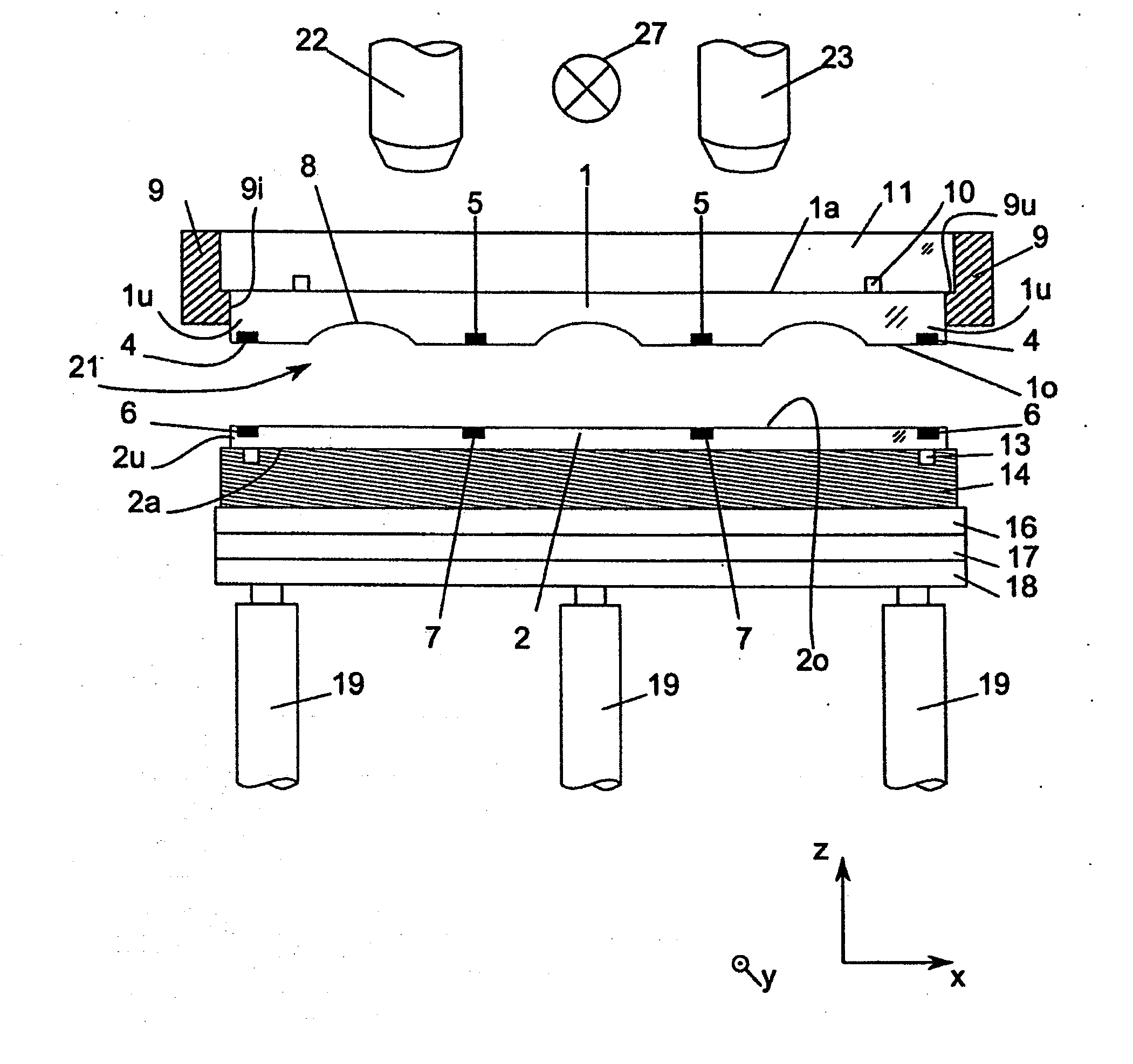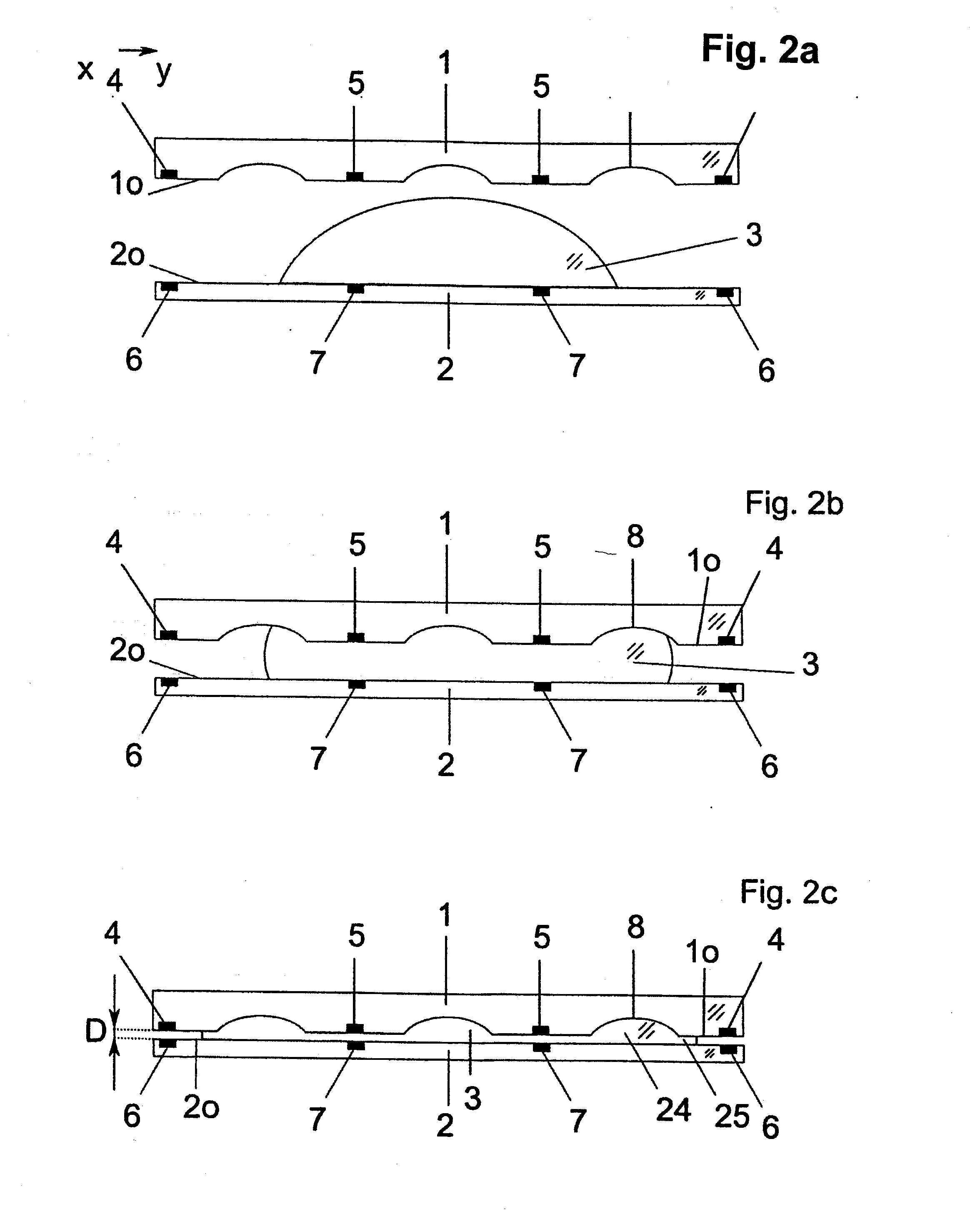Method and device for producing a lens wafer
a technology of lens and wafer, which is applied in the direction of auxillary shaping apparatus, ceramic shaping apparatus, applications, etc., can solve the problems of increasing the cost pressure of microlenses which are ideally to be produced in mass production, and the difficulty of optically correct production becomes more difficult, and achieves the effect of high production accuracy
- Summary
- Abstract
- Description
- Claims
- Application Information
AI Technical Summary
Benefits of technology
Problems solved by technology
Method used
Image
Examples
Embodiment Construction
[0043]In the figures the advantages and features of the invention are identified with reference numbers which identify them according to embodiments of the invention, components and features with the same or equivalent function being identified with identical reference numbers.
[0044]FIG. 1 shows a device according to the present invention for producing a lens matrix 25 which has a plurality of microlenses 24 (see FIGS. 2c, 3c and 4c).
[0045]In the embodiments shown, the lens matrix 25 is stamped onto an especially planar wafer 2. A die 1 with one stamping side 1o with a stamping structure 21 which has lens molds 8 is held in a first receiving means. The first receiving means is comprised of a holding device 9 which is ring-shaped on the interior thereof. The holding device 9 includes a peripheral shoulder 9u which extends toward the interior of the ring-shaped holding device. A receiver 11, which is provided with suction paths 10, is inserted and fixed in said holding device 9 on sai...
PUM
| Property | Measurement | Unit |
|---|---|---|
| depth of | aaaaa | aaaaa |
| depth of | aaaaa | aaaaa |
| depth of | aaaaa | aaaaa |
Abstract
Description
Claims
Application Information
 Login to View More
Login to View More - R&D
- Intellectual Property
- Life Sciences
- Materials
- Tech Scout
- Unparalleled Data Quality
- Higher Quality Content
- 60% Fewer Hallucinations
Browse by: Latest US Patents, China's latest patents, Technical Efficacy Thesaurus, Application Domain, Technology Topic, Popular Technical Reports.
© 2025 PatSnap. All rights reserved.Legal|Privacy policy|Modern Slavery Act Transparency Statement|Sitemap|About US| Contact US: help@patsnap.com



